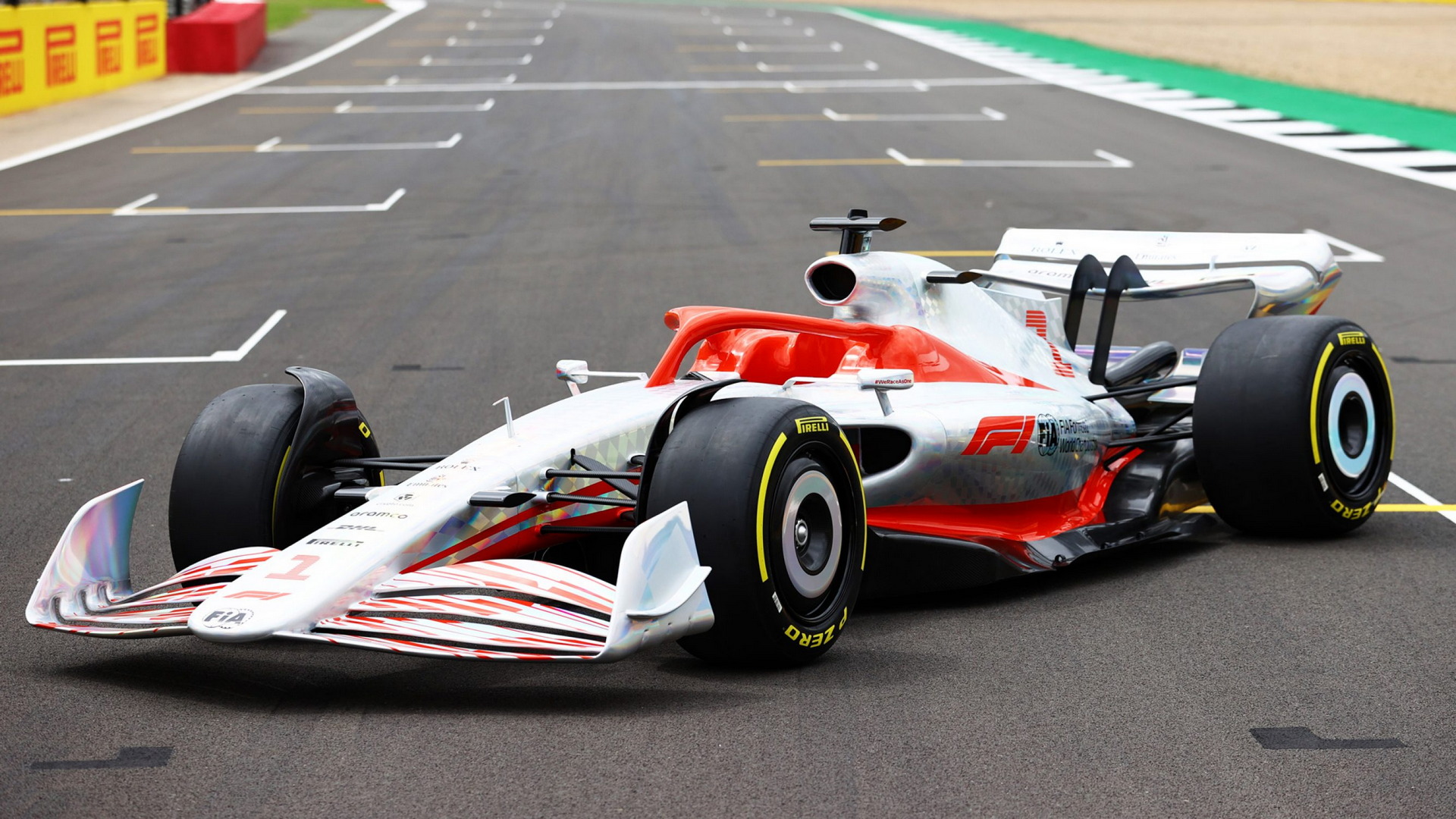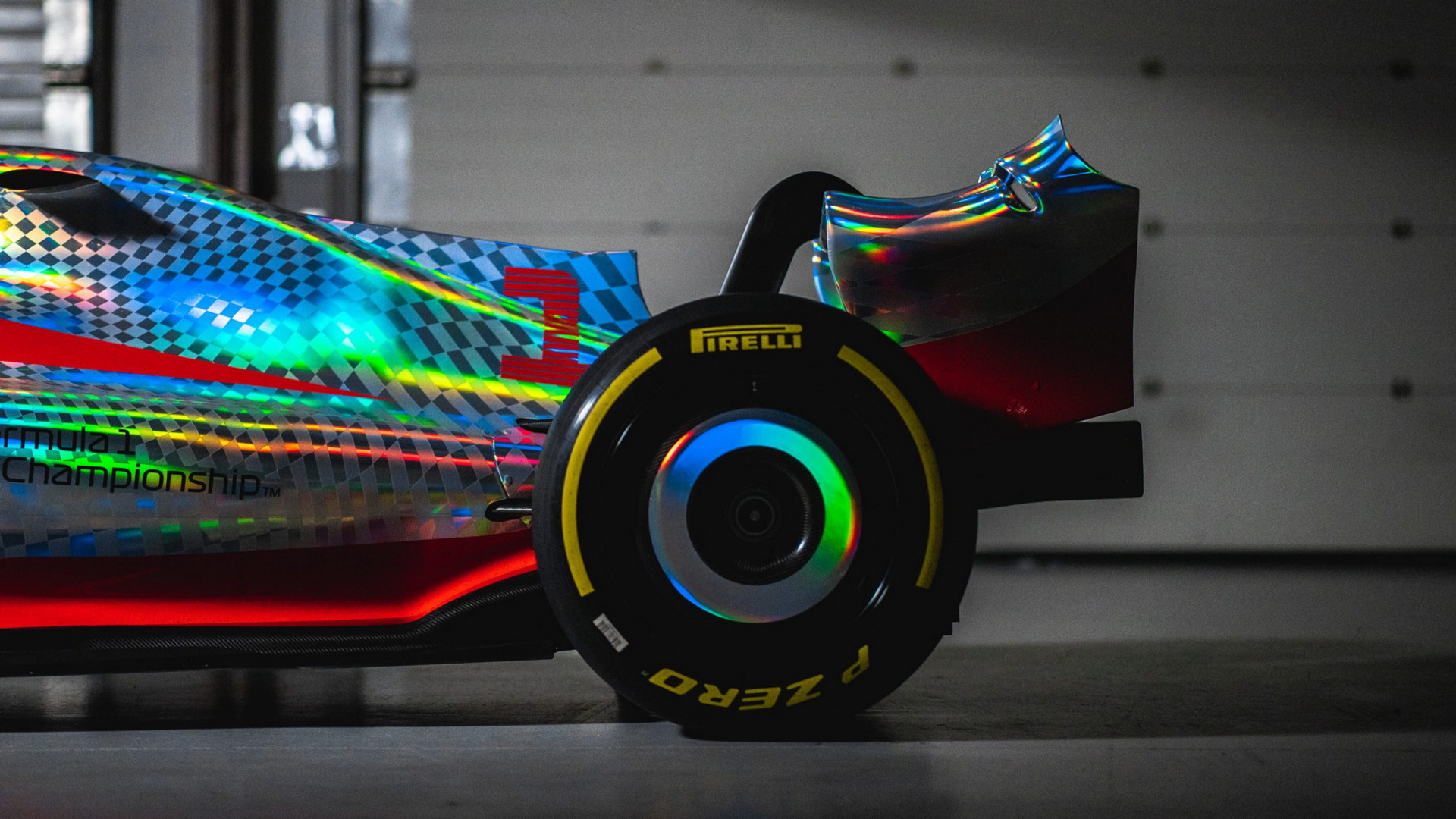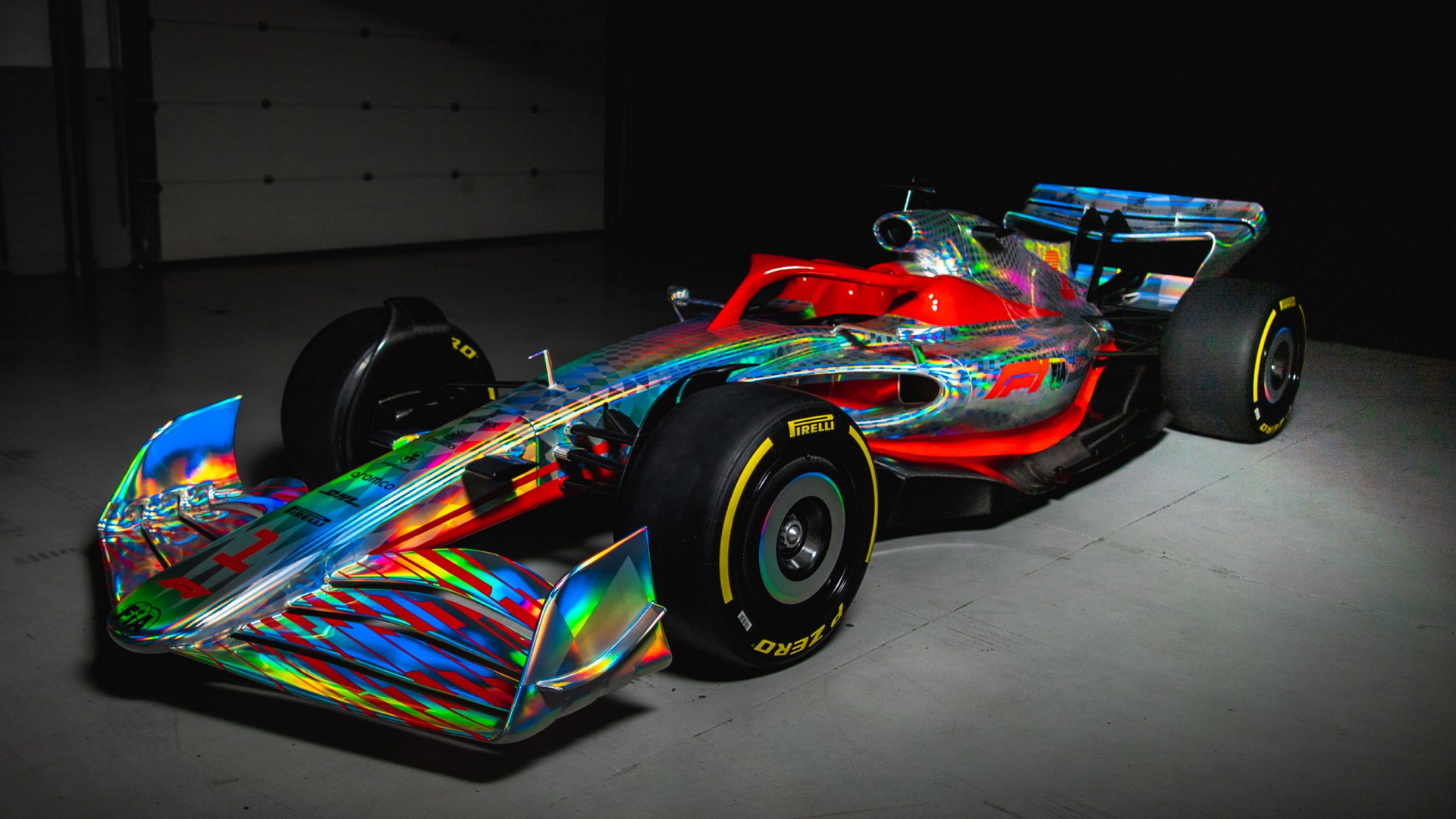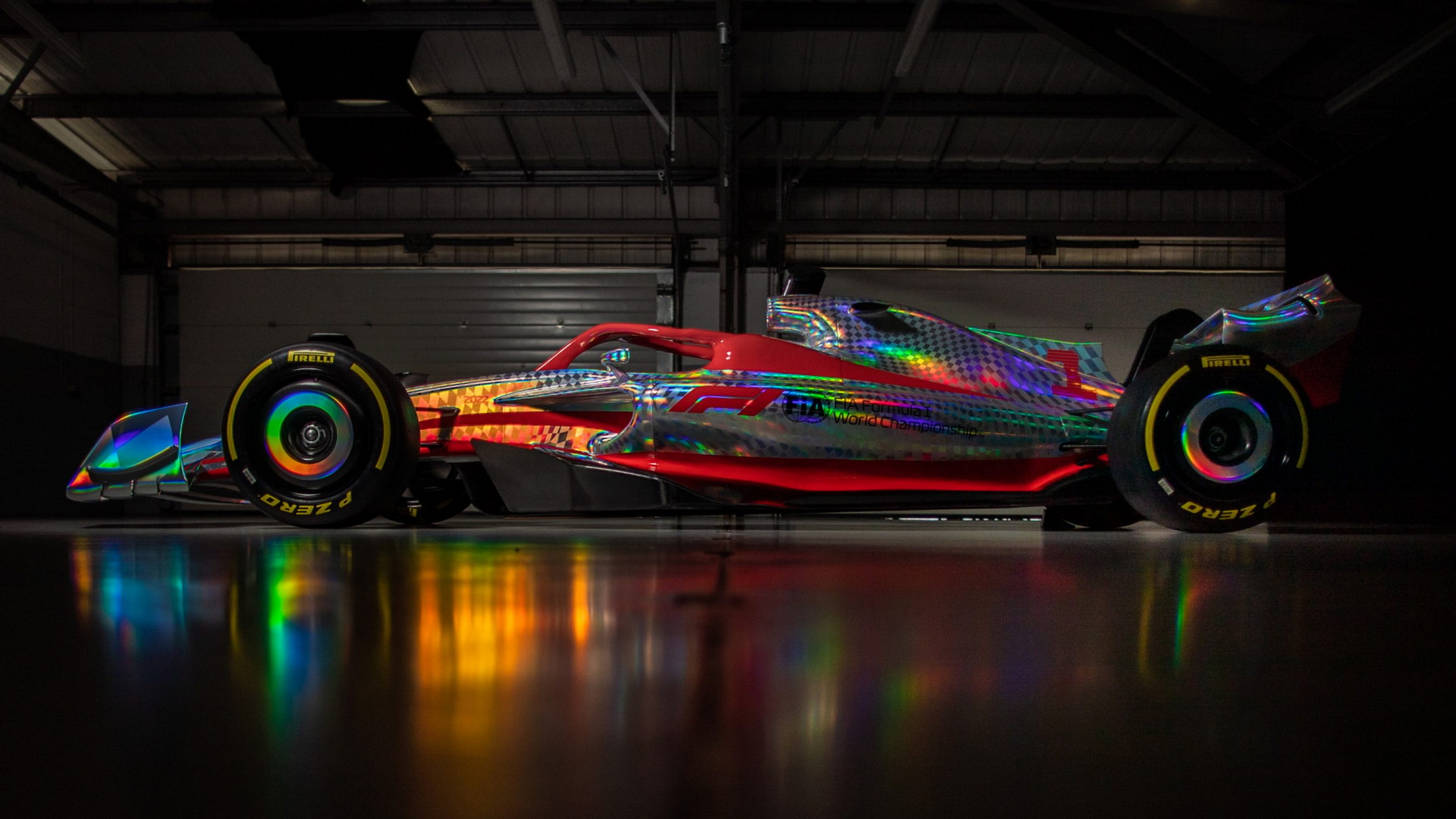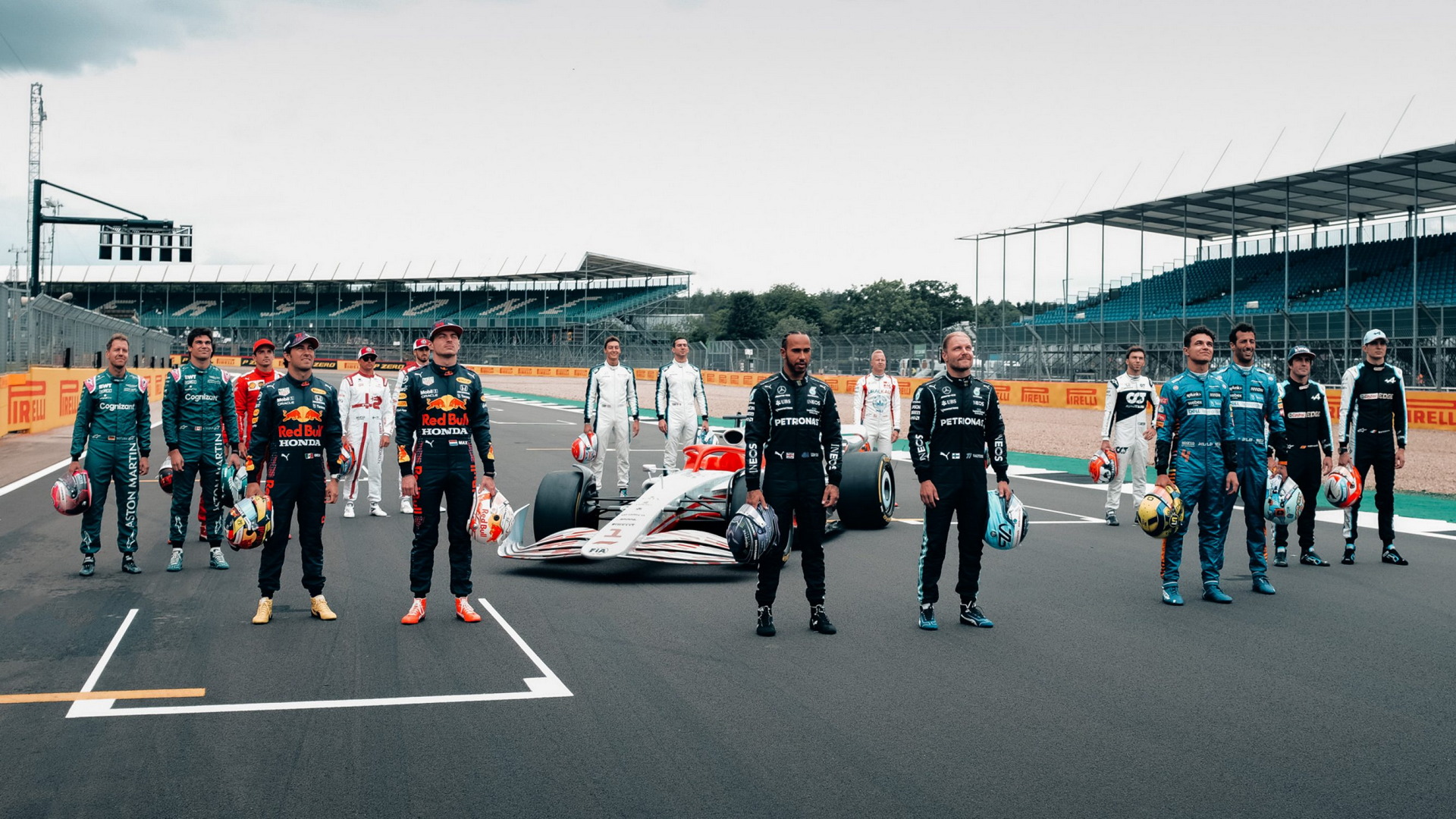Formula 1’s vision for the 2022 car is finally here. The premier single-seat race car has gotten an all new design for next season, one that promises to make for closer racing than anything we’ve seen in the turbo-hybrid era.
Formula 1 began work on the car all the way back in 2017, and in addition to the 138 baseline designs and 100+ wind tunnel hours, their Motorsports team apparently ran around 7,500 simulations to land on the design we see here.
See Also: Watch Ferrari Restore Its First-Ever F1-Winning Car In Time For The Silverstone Grand Prix
Those simulations created around half a petabyte of data, which, according to F1, is equivalent to around a third of the 10 billion photos on Facebook, or 10 million four-drawer filing cabinets full of text documents. Additionally, they took 16.5 million core hours to solve, meaning that if they had been carried out on a single high-spec Intel i9 quad core laptop, the whole process would’ve taken 471 years.
The new car’s primary goal was to create closer racing. As of right now, the current cars create a large aerodynamic disturbance in their wake, leading to a “catastrophic downforce loss” for the cars following behind. To quantify that, F1’s research showed that the current cars lose 35 percent of their downforce when running three car lengths behind a car ahead, and 47 percent when running one car length behind. For comparison, the new 2022 car reduces those figures to 4 and 18 percent respectively.
Probably the biggest changes to the new car are the aero features and overall bodywork design, which have been simplified not only to minimize that aforementioned aerodynamic disturbance, but also to limit development costs in an attempt to even the playing field more. Interestingly, the Motorsports team apparently even thought about possibly running the 2022 car without a front wing at all, but they eventually decided against it. DRS remains, but the Motorsports team will be studying its effects during the season to determine its continued viability.
Additionally, ground effect makes its return for the first time since the 1970s as a way to help make up for the downforce reduction from the simpler aero. The goal of the ground effect is to produce higher quality downforce that is less sensitive to changing conditions and produces less drag than other types of aero features. Wheel covers also make their return since departing in 2009, but the 18-inch wheels they ride on are an F1 first and a big departure from the old 13-inch ones.
The 2022 cars will still be powered by 1.6-liter turbocharged V6 hybrid power units, and while there are no official power figures, some teams have allegedly been able to achieve upwards of 1,000 hp (1,014 PS / 746 kW) on the current ones. The bigger change with these power units, though, is that for 2022, they will be running on a more sustainable fuel that sees its bio-component level raise to 10 percent compared to 5.75 percent in 2021.
Read More: Max Verstappen Races Red Bull F1 Car Against Spitfire
Following the events of some recent serious accidents, safety has been paramount for the new car. As such, the chassis can now absorb 48 percent more impact force from the front and 15 percent more from the rear, as well as greater forces in the static “squeeze” tests.
To avoid a repeat of Romain Grosjean’s 2020 Bahrain accident, the car is now designed in a way that in the event of a crash, the power unit will separate cleanly from the chassis so as not to expose the fuel tank. And learning from Anthoine Hubert’s fatal accident at Spa in 2019, a longer nose section along with stronger chassis sides help dissipate energy in a crash and withstand T-bone impacts.
It’s worth noting that this car is just a baseline, as each team will ultimately put their own spin on the regulations. Regardless, we’re excited to see how these new cars look (and more importantly, how they drive) when they hit the track next year. And, of course, whether these radical changes will result in upending the current status quo among the teams.





